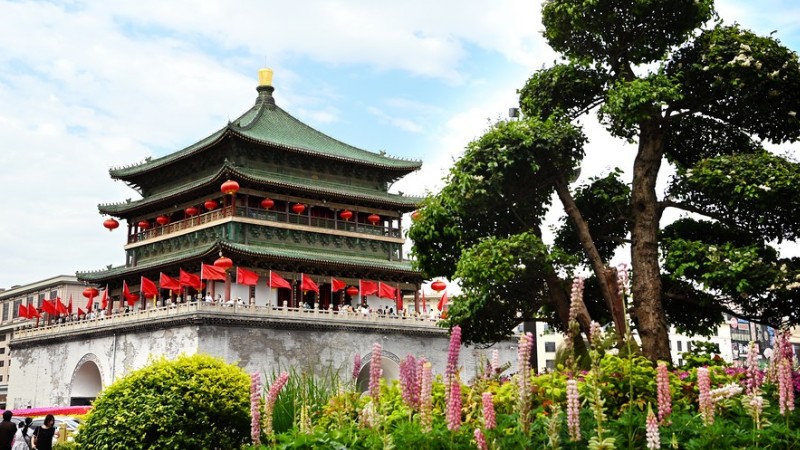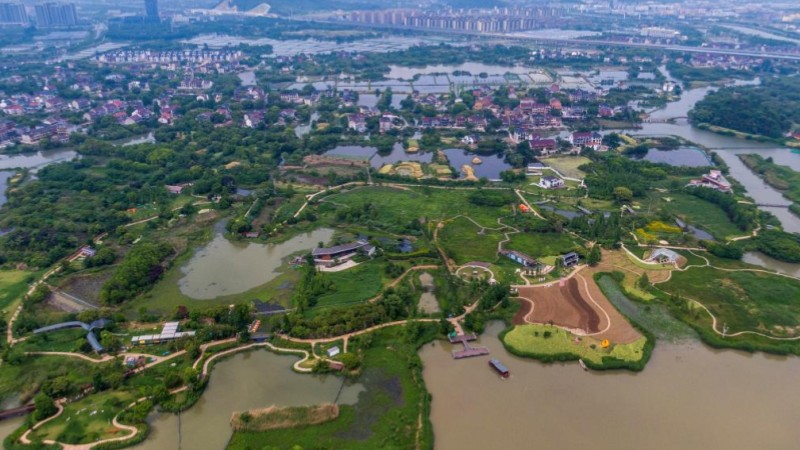Cultivating crayfish in paddy fields brings prosperity to villagers in E China's Anhui
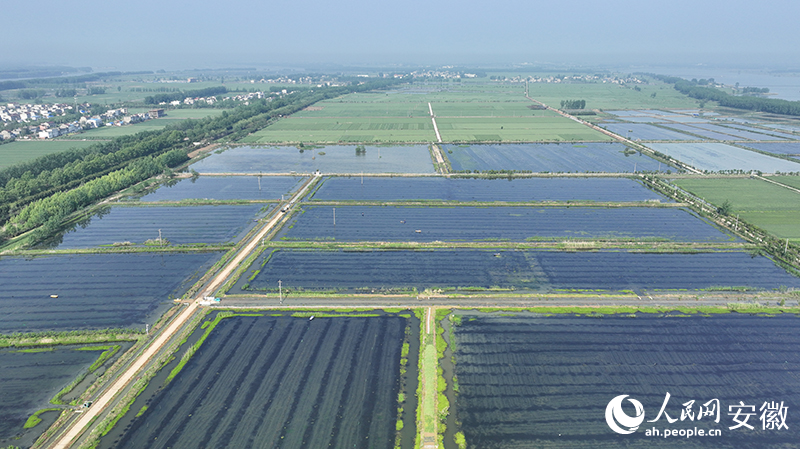
This aerial photo shows a crayfish breeding base in Wuhe county, Bengbu, east China's Anhui Province. (People's Daily Online/Tao Tao)
Tourism in Bengbu, east China's Anhui Province, saw a boom during the just-ended May Day holiday, as demonstrated by the long queues of customers outside the popular restaurants waiting to taste local crayfish dishes.
For Huang Yuezong, the popularity of Bengbu crayfish is a source of great happiness.
Six years ago, Huang quit his executive post in an enterprise and began breeding crayfish back in Wuhe county, Bengbu. He founded an agricultural technology company in the county, which now has 5,000 mu (333 hectares) of land for crayfish feeding and rice growing. Wuhe literally means "five rivers", and is named after the five rivers that converge there, providing high-quality water for aquatic breeding.
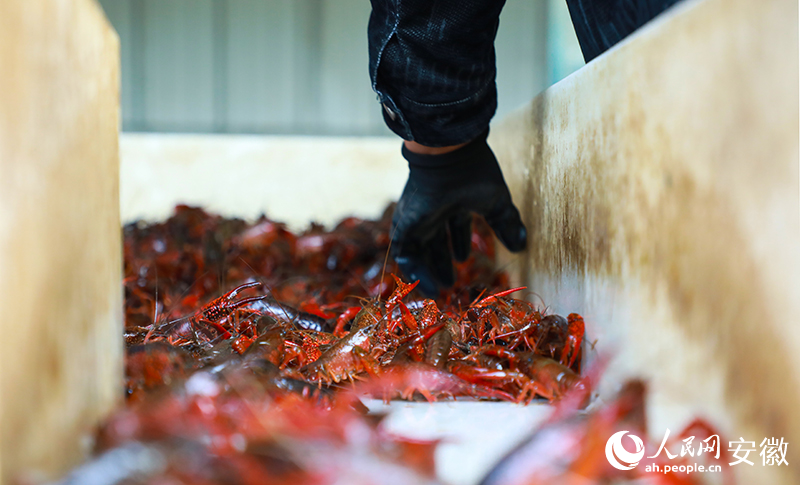
Photo shows crayfish at a breeding base in Wuhe county, Bengbu, east China's Anhui Province. (People's Daily Online/Tao Tao)
Inside the company's breeding base, workers were busy harvesting, sorting and packaging fresh crayfish to be transported to neighboring cities.
"Because of the high-quality water and little pollution, crayfish farmed in Wuhe are large and plump," said Huang, adding that as their growth cycle is around 40 days, young crayfish cultivated from the middle of April can be harvested at the end of May, while rice planting kicks off at the beginning of June, resulting in bumper harvests of both crayfish and rice.
"As the selling season for crayfish is underway, not only restaurants from Bengbu but those from neighboring Jiangsu Province also bought them from me, which can bring in an income of three million yuan ($433,801) annually," said Huang.
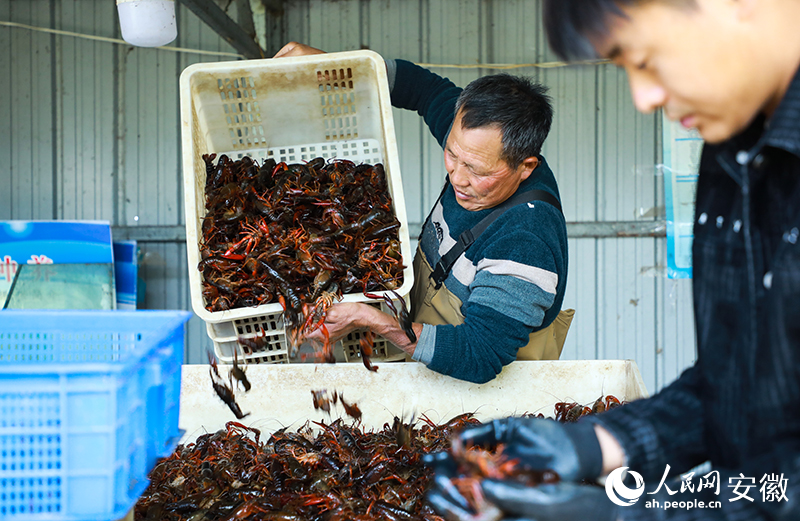
Workers sort crayfish at a breeding base in Wuhe county, Bengbu, east China's Anhui Province. (People's Daily Online/Tao Tao)
The county invites experts to provide guidance for crayfish breeders in order to ensure that the model of farming crayfish and rice together in paddy fields can be successfully implemented.
Wang Benlong is one of those experts. The model, in his view, has its own advantages. Since less fertilizer and pesticides are applied in the fields, rice produced here is highly sought-after in the market and processed rice can be sold at a higher price, thus creating more profits, Wang added.
The model has brought tangible benefits to local farmers. Looking ahead, Wuhe plans to pursue the comprehensive and diversified usage of paddy fields, such as for breeding crabs, fish, loach and turtles.
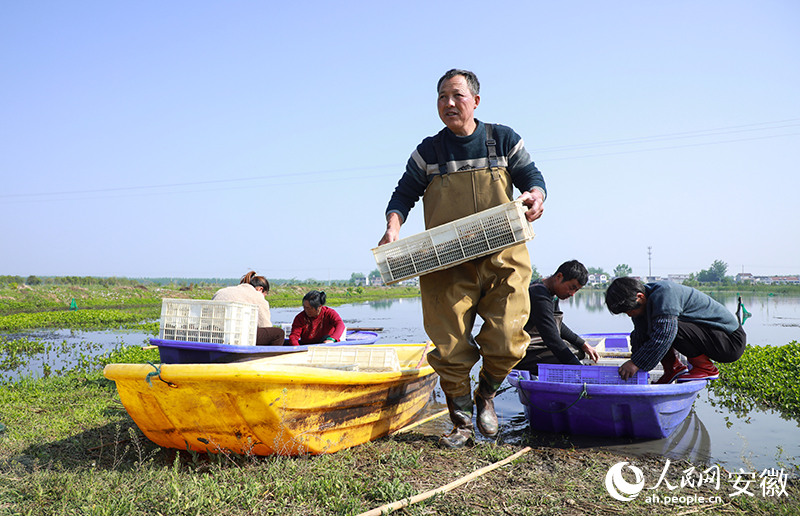
Workers pack crayfish at a breeding base in Wuhe county, Bengbu, east China's Anhui Province. (People's Daily Online/Tao Tao)
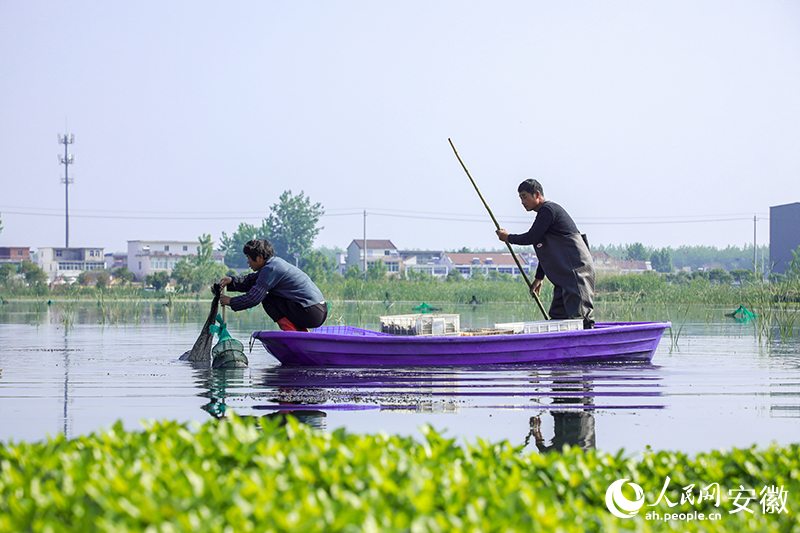
Workers collect crayfish at a breeding base in Wuhe county, Bengbu, east China's Anhui Province. (People's Daily Online/Tao Tao)
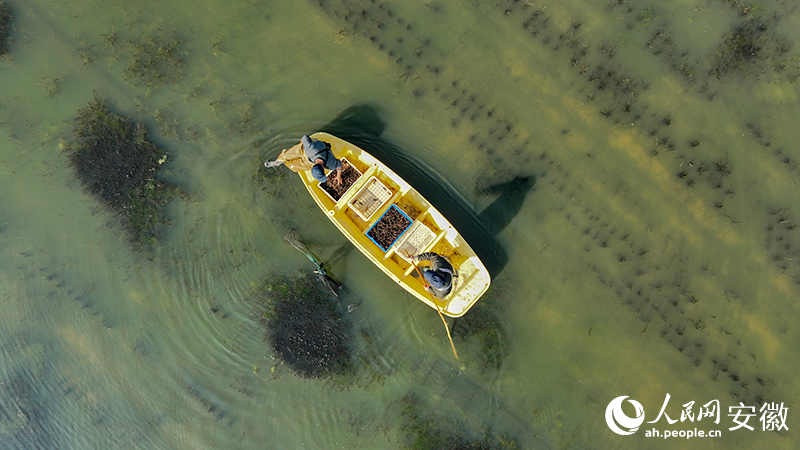
Workers collect crayfish at a breeding base in Wuhe county, Bengbu, east China's Anhui Province. (People's Daily Online/Tao Tao)
Photos
Related Stories
- Technologies bringing "digital dividends" to rural residents
- Targeted local govt support leads poor NW China villagers to prosperity
- Disabled man in SW China’s Yunnan brings prosperity to rural residents through vegetable planting
- Hot-selling navel oranges bring wealth to county in C. China's Hubei Province
- Favorable policies, support see surge in talent to China’s rural areas
Copyright © 2023 People's Daily Online. All Rights Reserved.







